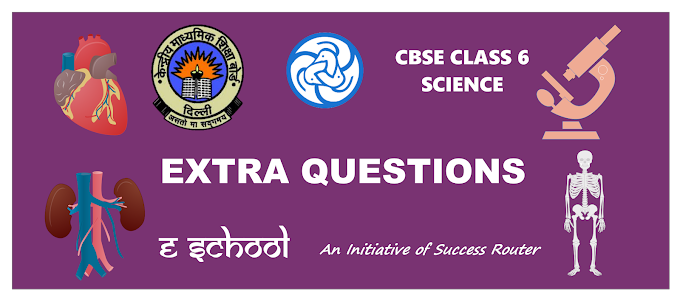Question 1.
Name the food each rich in:
- dietary fibre
- sugar
- protein
- starch
- fat and oil.
Answer:
- Dietary fibre: Spinach, cabbage, ladyfinger.
- Sugar: Milk, banana, sugarcane.
- Protein: Milk, meat, fish, egg.
- Starch: Rice, wheat, bajara.
- Fat and oil: Butter, ghee, cheese, groundnut.
Question 2.
Name the food needed:
- for strong bones and teeth
- to prevent scurvy
- to avoid constipation
- for warmth
- for growth.
Answer:
- The bones and teeth are made up of salts of calcium and phosphorus. Calcium is found in milk, buttermilk, cheese, green leafy vegetables, ragi. While cereals, pulses, fish and meat are good sources of phosphorus.
- To prevent scurvy, vitamin C is required, which is found in citrus fruits, green and red peppers.
- To avoid constipation, roughage is very important. Roughage is mostly given by the food derived from plants, which contains enough cellulose. Most of the vegetables, fruits and whole grain provide roughage in our food.
- For warmth: ghee, butter, meat, fish, etc.
- For growth: milk, green leafy vegetables.
Question 3.
What are the roles of
- carbohydrates,
- fats,
- vitamins and
- minerals.
Answer:
1. Role of carbohydrates: Carbohydrates provide us energy.
2.Role of fats: Fats provide us energy.
3. Role of vitamins:
- Vitamins are necessary for various physiological activities.
- Vitamins keep us healthy and protect us from many diseases.
- Vitamins are required for the proper functioning of body parts.
4. Role of minerals:
- Minerals help us to make our bones and teeth strong.
- They help to prepare blood.
Question 4.
What do you mean by staple food?
Answer:
The main food that we eat to provide us energy is called staple food. In our country, rice, chapati and bread are staple food.
Question 5.
What is the function of vitamins?
Answer:
Vitamins only help in the proper utilization of other nutrients such as carbohydrates and fats. Many vitamins help enzymes in their action and are called co-enzymes.
Question 6.
Name any two sources of Vitamin B.
Answer:
The two sources of Vitamin B are:
- Milk
- Soybean.
Question 7.
Name the vitamin present in orange.
Answer:
Vitamin C.
Question 8.
What is the role of Vitamin C?
Answer:
Vitamin C helps in proper growth, healthy teeth, gums and joints and helps the body fight against the diseases.
Question 9.
Write the names of fat soluble vitamins.
Answer:
Vitamin A and Vitamin D.
Question 10.
Write the names of any two water soluble vitamins.
Answer:
The two water soluble vitamins are:
- Vitamin B
- Vitamin C.
Question 11.
Write the sources of fat.
Answer:
ats are found in vegetable oil, ghee, butter, milk, cheese, meat, fish, cod-liver oil, etc.
Question 12.
What are the sources of carbohydrates?
Answer:
Rice, wheat, maize, potatoes, sugar and jaggery are the sources of carbohydrates.
Question 13.
What is roughage? Why its presence in our food is important?
Answer:
The rough, fibrous content of food is called roughage. Green vegetables like spinach, cabbage, ladyfinger and beans contain a good amount of roughage:
Role of roughage: Roughage helps in the movement of bowel. Roughage prevents constipation.
Question 14.
Name the main constituent of roughage.
Answer:
Cellulose is the main constituent of roughage.
Question 15.
Which among the following provides maximum roughage to the diet if taken in equal amount?
Egg, cucumber, grapes, cabbage.
Answer:
Cabbage.
Question 16.
Name the minerals which make our teeth and bones.
Answer:
Calcium and Phosphorus.
Question 17.
What are various functions of proteins?
Answer:
Functions of proteins are:
- Proteins are the building materials of our body.
- Proteins are the constituents of enzymes.
- Proteins make our muscles, skin, hair and nails.
- Proteins form a red pigment in blood which acts as an oxygen carrier.
- Proteins like fibrin help in clotting of blood.
- Proteins help in repairing damaged cells, replacing wornout or dead cells and tissues.
- Proteins help to develop resistance of the body against various infections.
Question 18.
Here are three strips. You have to paste them in figure at three places 1, 2 and3 At which place will you paste each strip?
- Protein rich food
- Carbohydrate rich food
- Fat rich food.

Answer:
Names of strips and their appropriate places are:
Question 19.
How are vitamins classified?
Answer:
Vitamins are classified into two categories:
- Water soluble vitamins, e.g., vitamins B and C.
- Fat soluble vitamins, e.g., vitamins A, D, E and K



0 Comments